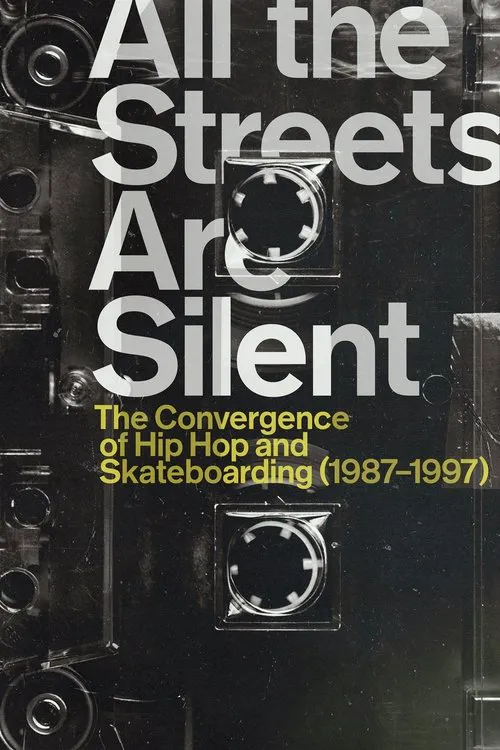All the Streets Are Silent: The Convergence of Hip Hop and Skateboarding (1987-1997)

Plot
In the late 1980s and early 1990s, a unique cultural phenomenon emerged in downtown Manhattan. It was a time when the worlds of hip-hop and skateboarding collided, creating a vibrant and dynamic fusion of style and expression. The convergence of these two youth movements would forever change the landscape of urban culture, paving the way for a new generation of artists, musicians, and thrill-seekers. At the heart of this cultural explosion were the skaters and b-boys of downtown Manhattan. These young individuals were drawn to the city's streets, which offered a canvas of concrete and asphalt waiting to be transformed into a realm of artistic expression. With their customized skateboards and breakdancing moves, they began to claim the city's streets as their own, imbuing the urban landscape with a sense of community and creativity. The documentary "All the Streets Are Silent: The Convergence of Hip Hop and Skateboarding (1987-1997)" captures the spirit of this era, weaving together a rich tapestry of archival footage and oral histories to recreate the sights, sounds, and emotions of a bygone era. Through the eyes of those who lived it, the film delves into the world of 1980s skateboarding and hip-hop, where the boundaries between art and commerce, rebellion and commercialization, were constantly being tested and redefined. One of the key figures of this era was Rodney Mullen, a skateboarding pioneer who is widely regarded as one of the founders of street skating. Mullen's innovative approach to the sport, which involved combining technical tricks with a sense of freestyle and creativity, inspired a generation of skateboarders to push the limits of what was possible. In the film, Mullen recounts his experiences growing up in Southern California, where he honed his skills and developed a sense of camaraderie with his fellow skateboarders. In contrast, the hip-hop scene in downtown Manhattan was characterized by its raw energy and DIY ethos. This was a world where MCs and DJs ruled the night, spinning tracks in abandoned warehouses and makeshift clubs. The film showcases some of the most influential figures of this era, including Afrika Bambaataa, Grandmaster Flash, and the Juice Crew. These artists, who were at the forefront of the hip-hop movement, helped to shape the sound and style of a generation, pushing the boundaries of what was possible with language, music, and movement. The convergence of skateboarding and hip-hop was not just a matter of shared interests and aesthetics; it was also a reflection of the social and economic realities of the late 1980s. As gentrification swept through downtown Manhattan, pushing out long-time residents and small businesses, the skaters and b-boys saw their neighborhoods transformed beyond recognition. Their world was changing rapidly, and they responded by creating their own autonomous spaces, where they could express themselves freely and challenge the status quo. The film "All the Streets Are Silent" captures the essence of this era, when the streets of downtown Manhattan became a battleground for creativity, resistance, and self-expression. It is a testament to the power of art and culture to transform and transcend the urban landscape, to imagine new possibilities and create new worlds. Through its archival footage and personal narratives, the film offers a unique window into a pivotal moment in cultural history, one that continues to inspire and influence new generations of artists, musicians, and activists. In the end, "All the Streets Are Silent" is not just a documentary about the intersection of hip-hop and skateboarding; it is also a tribute to the spirit of innovation and experimentation that defined a generation. It is a reminder that the streets are always silent, waiting to be claimed by those who dare to dream and act. For those who lived it, the era of downtown Manhattan in the late 1980s and early 1990s was a time of possibility and transcendence, a time when the boundaries between art and commerce, rebellion and commercialization, were constantly being tested and redefined.
Reviews
Recommendations




